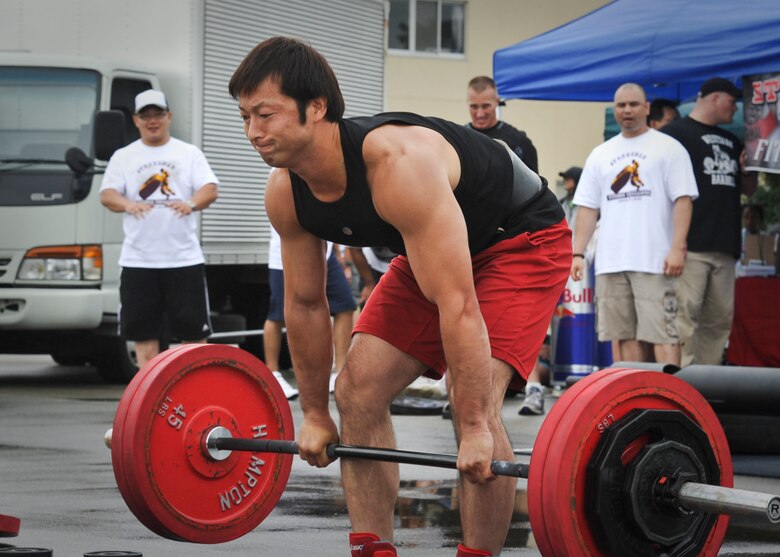Abs Workout -
How Often and How to Train Them?

This old question does not seem to have an absolute answer, the speech varies according to this or that gym. How often do I have to train my abs and how much time should I spend on the lap belt? Bodybuilders say you should train them every day, powerlifters say that poly-articular movements drive them enough to not have recourse to isolation movements, which is right?
Who squats twice his body weight or one whose fat mass is half of his size? Read on and the answer will seem clear, arm yourself with knowledge to be able to apply it, no matter what your goal or your style of training.
Anatomy of the Abdominals

Before reviewing the training frequency, timing, individual goals and everything else, everything will be much easier to understand if we explain the different muscles that make up your abdominal region or "core" as we like to call it. . The muscle that most all bodybuilding practitioners want (whether they say it or not) is the Abdominis Rectus (grand right), the famous "six-pack" that gives you an athletic figure.
It does not matter if you are doing a crunch or any abdominal extension movement, it is this muscle that you target the most. The deep muscle below the Rectus abdominis is the Transverse Abdominis. It wraps around the spine, protecting it and providing you with the stability needed for training and all the daily tasks.
The external oblique abdominals complete these muscles by positioning themselves along each side of the bust, thus making the link between the dorsal and the hips. Their main function is the rotation of the hips and torso. Finally the last muscles are the internal oblique abdominals which function in the opposite direction of the external obliques.
To simplify their utilities, the outer muscles help extend your chest from front to back, and rotate it from side to side. While the internal muscles are used primarily to protect your spine and lower back, stabilize the entire body and keep your belt wrapped during most daily exercises and movements.
If you are a PowerLifter ...


If you are a powerlifter, your main goal is to become strong, giving up any attempt to strip the extra fat that you most likely have accumulated in this quest for strength. Of course, there is no harm in this, but it gives some certainty that they do not necessarily have to work the "visible" muscles, which are part of the abdominals.
The idea is that if you do not want to show your big right or your obliques, you do not need to stimulate them directly. It is true that compound movements (such as the bench press, squat, deadlift or press movements) work your transverse enough to allow for growth and increase your strength in these movements, but is this a reason to neglect the pure training of the abdominals?
To put it simply, yes. If you perform compound movements in all your workouts, your abs will be stronger and that's what many powerlifters want.
But in our day, or appearance is so important, more and more powerlifters want to be strong, and as it shows, the answer to the question changes. If you want to have a six-pack, you have to work exclusively your big right and your external obliques.
But in returning to the description of these two muscles and their functions in the body, none of the movements described are worked during a polyarticular motion. Simply, the bench press, squat and deadlift work your internal abdominal muscles, but these will not show up to a certain percentage of body fat.
Which means that if you want strong abs and see each other, you have to work in isolation to grow.
If you are a BodyBuilder ...

This answer will be a little simpler, and most of you probably know what we are going to say in this section. If you are a bodybuilder, strength is a less important factor while aesthetics is the number one concern.
A large right and thick and trapped outer obliques are the most sought-after (just in front of the biceps and calves), and a perfectly sculpted middle section: it can make the difference between the first and the last place during of a bodybuilding competition.
In front of so much importance, many amateur and professional bodybuilders work their abdominals in isolation daily. This is an error that many bodybuilding practitioners adhere to because of a perpetuated myth that because your abs are a smaller muscle group, they recover faster and can be worked every 24 hours.
Do not make this mistake.
In reality, your abs can be worked just as much as other muscle chains, if you respect an interval of 48 hours. If you train hard enough taking care to perform compound movements, your abs will be worked every time, taking care of your internal muscles.
When it comes to working your external abs, 2 to 3 times a week is enough to cause growth and make them swell. Another infamous myth has emerged today: you do not need to work your abs while massaging. Exactly the opposite of what you have to do!
This is when your muscles will grow the most and not taking advantage of this opportunity will not allow you to display your abs during your dry. Do not become that kind of person who does not work invisible muscles at 15% body fat!
What does that mean ?

As you can see, our answer is to do a little more for powerlifters, and a little less for bodybuilders. Does this mean that everyone should do the same amount of work for the abs? Yes. That's exactly what we mean, attentive reader!
It is not only these two groups of individuals that are concerned, this advice applies to anyone who trains, in order to stay in shape, and who does not necessarily have goals of strength or aesthetic. Everyone should work their external abdominals 2-3 times a week and their internal abdominals by performing compound exercises 2-3 times a week as well.
Of course, everyone's preference but in a context of growth and strength, this is exactly the time to devote to it per week.
The other important question is, when you train your abs, how should this be structured in your routine? How many exercises do you need to do to properly stimulate the external abdominal muscles? How many repetitions per exercise?
It comes down to your personal goals and preferences. But we will give you some tips to keep in mind ... Do your isolation work towards the end of your routine, after your poly-joint exercises because a pre-fatigue of the abdominal chain will result in a loss of sheathing and stability needed to prevent injury and keep a perfect technique.
Because your abs are a smaller muscle group, they respond best to large series workouts, this being said a mix of large body weight series and small weighted series can bring you to a superior workout .
Two exercises are enough to work on your external abdominals: one for the big right, and one for the external obliques. There is no need to spend half an hour on the abs to work enough (unless you have the time and energy, in this case you can go to it, but keep in mind that it will not be more effective than just two exercises, you will just burn some extra calories).
How to apply these concepts?
A good example of an abs circuit that you can quickly do at the end of your workout is a superset of four sets of two exercises. Start with knee tests hanging on the bar (or leg rest if it becomes too easy, conversely, if the knees are too complicated, then start on a dips station), 10-15 repetitions to tire (close but not up to failure) your grand right.
Without rest, head to the ground to perform 50 repetitions (25 per side) of russian weighted twists, whether with a 2, 5 or 10kg disc (something heavier will most certainly deteriorate your technique). The russian twists will tire your external obliques and if you work qualitatively, you should not be able to perform one more rehearsal at the end of your fourth set.
These eight series (four per exercise) should be effective in stimulating the growth of your two external muscles, if you are in excess of calories. The work of the abdominals is never boring, there are tons of exercises to stimulate your muscles!
At the end of the day, you can work your abdominal muscles as you wish, as much or as little as you wish! Just keep in mind all the possible benefits by working them often (but not too much), not to mention the aesthetic visual appeal of a "six-pack".
Remember the information learned here, thank you for reading to the end and continue to train smartly and safely to achieve your goals!
0 Comments